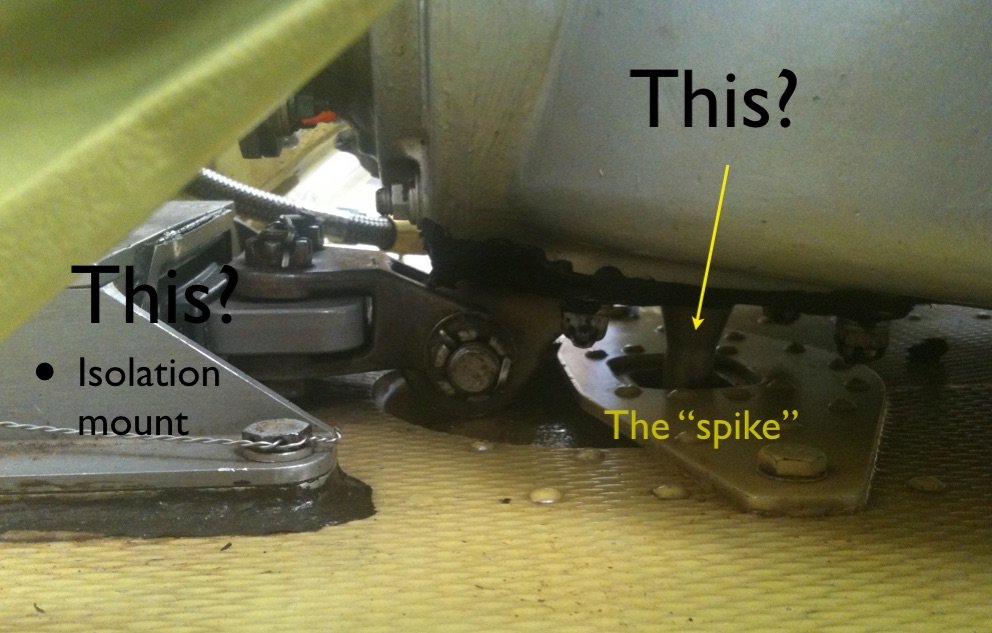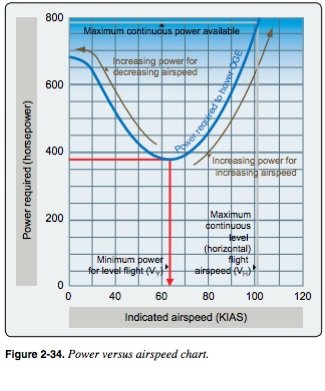-
Posts
909 -
Joined
-
Last visited
-
Days Won
60
Eric Hunt last won the day on February 22
Eric Hunt had the most liked content!
Profile Information
-
Gender
Male
-
Location
Near the beach
Eric Hunt's Achievements
-

Any Monocular Pilots out there ?
Eric Hunt replied to dauphin_army's topic in General Helicopter Forum
Depth perception is pretty important when hovering, especially when close to an obstacle. I have known one monocular pilot, but he was only allowed to hold a private licence. I also knew a cross-eyed pilot, again only private licence. -

Bell 205 Throttle Control and Acceleration Torque
Eric Hunt replied to sdsteven's topic in General Helicopter Forum
...and whatever else happens, leave the switch with the triangle head on it in the AUTO position. Don't even let your mate flip it to Manual, unless he is an experienced instructor on Hueys. Too easy to burn the back out of the engine with ham-fisted Robinson inputs. -

Bell 205 Throttle Control and Acceleration Torque
Eric Hunt replied to sdsteven's topic in General Helicopter Forum
SDSteven, Don't worry about the negative people on this forum (and there are a lot of them). You spoke of 6600 N2 RPM, so it sounds more like a UH-1H, because the B205 used a dial with 100% RPM instead of actual numbers. Probably a better idea, but since 1973 I have had "full throttle, 6600 RPM" imprinted on the brain. If it is a Huey, there may be limitations on carrying pax - being a military machine - but a B205 doesn't have that problem. It also has a better tail rotor and (I think) dual hydraulics. -

Bell 205 Throttle Control and Acceleration Torque
Eric Hunt replied to sdsteven's topic in General Helicopter Forum
The Allison/RR250 in the B206 is totally different from the Lycoming in the 205. With the 250, you have the throttle at shut-off, crank the engine to 15% N1, then snap the throttle to the idle position - the light-off and acceleration of TOT is a little disturbing to the novice. The Lycoming, in our air force, was started from the idle position. The light-off was gentle, and acceleration gratifying. Some people are worried that a total electrical failure after light-off meant the start and acceleration cannot be stopped, as you need power to activate the solenoid and close the throttle. Hence the "start below the idle stop" procedure. -

Climb Torque vs. Cruise Torque
Eric Hunt replied to Agog's topic in Aerodynamics, Mechanics, or other...
Actually, it is a reduction in the cruise. The rotor is getting more clean air from in front, rather than descending air from above. With less Induced Flow, the total reaction vector moves forward a little, reducing the rotor drag and thus the torque needed to maintain flight. Look at your Power Required curves to verify this. -
The spike is at the bottom of the Txmsn, in its little hole, able to move around with flexes in the Txmsn mounts. However, if the Txmsn moves too far, like a heavy landing, the spike will knock against the side, and leave a mark on the spike. The metal edges are of a softer material than the spike.
-

Who here has piloted a Bell 205?
Eric Hunt replied to Plumcrazy Preston's topic in General Helicopter Forum
Preston, your comfy seat can't be too comfy or you would doze off, that's why Bell instal such awful seats - you are so uncomfortable, you cannot sleep. And develop lumbar spondylosis. Your comfy seat might not provide the required vertical g crashworthiness either. Electric seats? I can imagine the emergency drill for a runaway seat rearwards...have had a couple of these in Aerocommander planes, when the fuselage flexes on rotation. -

Who here has piloted a Bell 205?
Eric Hunt replied to Plumcrazy Preston's topic in General Helicopter Forum
You need one pilot to fly it. That pilot is not gonna leave the controls to clamber into the back, while airborne. Even if it had an autopilot, he wouldn't do it. A copilot might be able to get into the back, if the seat rails were extended by about 2 feet. There was also a folding back on the armoured seats, to allow crew to pull an injured pilot away from the controls. But a layback seat might be a worry if it came loose in flight. -

Civilian Helicopter Pilot vs. Ex-Military
Eric Hunt replied to MComerford's topic in General Helicopter Forum
The military isn't just an option for doing your training. It is a career, and you need to be firm in your mind that you are ready to defend your country, get sent to war zones, have people shoot at you, and be asked to do some extreme things, over and over, for many years. The selection process is rigorous, and of the initial applicants, the dreamers like yourself, few will be selected, and only about 10% of the original applicants will emerge from training with wings. The training you get will be top notch, and when you leave, you will have some skills that are absent in the civvy-trained pilot, and some worthwhile aircraft types. However, the civvy pilot will probably have more experience in being commercially savvy and independent of the layers of support a mil pilot is used to, though maybe only R22 and R44 qualified. -
Only if a spring-assisted force trim was on, and even then the FT would only be returning the stick to central, it will not restore the attitude to level flight, so you are in a turn somewhere and about to depart from your desired path. But with no force trim, and hydraulics preventing any feedback, the aircraft will continue to roll, the nose will drop, the blades cut the tail boom off, and it is a short ride to your final destination.
-
Are you talking about an aircraft with hydraulic controls? Friction off and force trim off? With force trim off, the stick would tend to flop in whatever direction it was in when the FT was turned off, so if the stick was forward of centre (you expect it to be there if doing 80-100 kt) then the stick would tend to continue moving forward. In a right turn, if steady, then the cyclic would be almost central (laterally) so might not go anywhere in particular. Most likely not return to level attitude or left turn, as it is dynamically unstable. However, if talking about a non-hydraulic aircraft, like an R-22, where you are holding against control forces all the time, no telling what it would want to do. Very foolish to let it go.
-
Remember that the "speed" can be the physical speed of the aircraft through the air (parasite and profile drag increasing) or it can be the Relative Air Flow (RAF) to the blades in the hover or in forward flight. (Induced Flow). In the hover, the downward induced flow is highest, and the Total Reaction is tilted further back from the RAF. It is producing plenty of lift, but a larger component of it is pointed backwards (drag) and the drag component points downwards (weight), so the poor old rotor is producing Lift+Thrust to overcome it. The speed squared is the RAF, in this case, and is certainly not zero when in the hover. In forward flight, there is less IF, so the TR moves forward, more is available for Lift and less is used up in Drag, so the curve moves downward while the others move upward. The work being done is pushing the airflow downwards. No work, no fly. The engine is the ONLY thing producing power, the rest of them are chewing it up. The power can be converted to Kinetic Energy (speed) or Potential Energy (altitude) and these are the things that you can use up to produce the autorotative forces that allow you to control descent when the engine goes on holidays. But you only get one bite at KE+PE, once you use it, it's gone.
-
The power curve is made up of 3 components, one of which is the power to overcome induced drag, which is greatest at zero airspeed. It then works its way down. Of the other 2 components, one starts at either zero and the other is at a mid-level, and work their way up. The induced flow is moving, it still takes power to suck the air from the top and push it out the bottom. And power to overcome transmission drag, hydraulic pumps, generators and such. But I know you were just having a poke for fun. Too easy.
-
V-any, are you looking for the definition of Power? Or are you asking why there are 2 charts, one showing drag and the next showing power? The power chart is a slightly different shape from the drag chart, because speed has to be factored in. You won't overcome any drag without using power. Work = Force x distance, the force in this case is Drag, proportional to Speed squared (CL x 1/2 rho x speed squared) Power = work / time So, Power = drag(speed squared) x distance / time, and distance / time = speed, which makes the equation: Power = speed cubed times the Bernouilli bits. Simples.
-
This chart is from your FAA -H-8083-21B handbook. Note that it talks about Power, not Drag. Yes I can see why you are hung up on drag, but it is the Power Required to Overcome Drag that is why you stay in the air - or not. Multiply drag times speed to get the basis of power. And as usual, this book is full of errors. It labels the right side of the rising curve as "power required to hover OGE", but the corresponding speeds range from 65kt to 100kt. That caption should be at the far left, at 0 kt.








